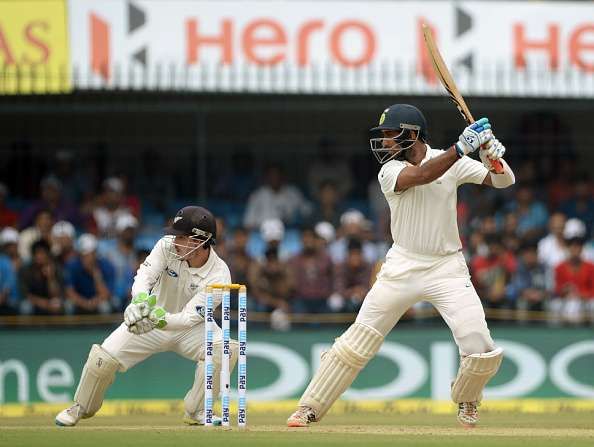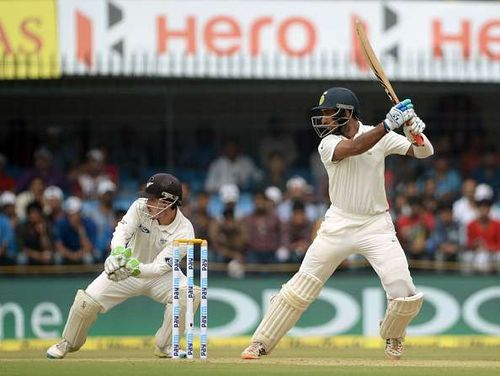
Indore - A new cricketing chapter opens with India’s latest Test venue

The Holkar Stadium in Indore is all set to host its first Test match, becoming India’s 22nd Test venue. 21 Test venues so far in India have hosted 250 Tests, exactly half of the total number of Tests India has played. The enthusiasm of the crowd was thoroughly noticeable as many thronged the stadium just to watch net practice sessions of both teams. Their open-mindedness and love for the game was delectably visible as they cheered several New Zealand players, most prominently, New Zealand’s skipper Kane Williamson.
That has everything to suggest it is going to be an interesting crowd well-versed in the game, like the ones at Chennai and Mumbai. As India looks to make Test cricket more popular and as the think-tank at the BCCI is out wondering about the steps to take to popularise the game and the format further, venues like Indore offer a lot apart from the unbridled enthusiasm of the spectators.
Indore is no stranger to international cricket with two stadiums. The Nehru Stadium has hosted 9 ODIs, the last one being in March 2001. The new stadium has taken over since. The Holkar stadium has so far hosted 4 ODIs. Indore is part of a set of 6 different venues which were targeted for Test status, Nagpur, Ranchi, Rajkot, Dharamsala and Hyderabad being the other five.
Also read: India vs New Zealand Live Score and Commentary, India vs New Zealand 2016
Nagpur and Hyderabad have already hosted Test matches, whereas Ranchi and Rajkot are geared up for Test baptizing when Australia and England tour India respectively as part of the present season. With a capacity of 30,000 the Holkar Stadium is the domestic venue for Ranji matches played by the Madhya Pradesh team.
A lucky venue for the Indian side
The first match played at the Holkar Stadium was on 15 April 2006 against England, India winning the match by 7 wickets. The last one was on 14 October 2015, when India won against South Africa by 22 runs. The other two matches were against England in November 2008 which India won by 53 runs and against West Indies in December 2011 when India won by a whopping 153 runs.
That gives India a 100% success rate at Indore, which bodes well for the thirdTest where India would be eyeing a whitewash. The stats also show how India won thrice by batting first and once by chasing a score down.
The scores were not massive, uncharacteristic of Indian pitches, vouching for a track that will assist batsmen as well as bowlers. India chased down 289 once. It hammered West Indies by scoring 418 in a game where Virender Sehwag, the stand-in captain scored a then-world-record 219 off just 149 deliveries.
India defended 292 against England in 2008 and just 247 against South Africa in 2015 in a memorable game that Dhoni won, almost entirely on his own batting might. That game saw India score 247 after being 124 for 6 and 165 for 7. In a humdinger of a match, South Africa frittered away a brisk start and went from 134 for 2 to 225 all out with Bhuvneshwar Kumar and Axar Patel picking up 3 wickets each.
Records at other venues
Amongst the other 21 venues, Eden Gardens, Kolkata has hosted the most games – 40 - of which India has won 12 and lost 9 matches. Feroz Shah Kotla, Delhi and Chidambaram Stadium, Chennai come second and third with 33 and 31 matches and a similar win/loss ratio of 13/6. India’s best W/L ratio is at Mohali where it has won 6 and lost just 1 match. After 1965, no venue has witnessed India losing more than it has won and that augurs well for the home team.
The last venue to be granted a Test status was the Rajiv Gandhi International Stadium, Uppal, Hyderabad, that has already hosted three Tests, two of which India has won. More recently, two stadiums, at Dharamshala and Ranchi, were accorded ODI status in 2013 throwing the doors open to audiences from across the length and breadth of the country, ensuring the game travels to Tier 2 and Tier 3 cities instead of being limited to just the bigger ones.
Indore is one of those harder surfaces in India, that offers something to the faster bowlers although it is improbable a surface in India would support quicks more than spinners. Given the quality of the tracks at Kanpur and Eden Gardens, the Holkar Stadium has huge boots to fill. Both games were played on sporty wickets that had something for pacers and spinners, including bounce and turn but offered value for money on shots and rewarded batsmen with real skills – the ideal pitches basically.
Indian audiences will also be wary of the fact that no batsman has scored a century so far. Cheteshwar Pujara and Rohit Sharma lead the charts with 231 and 187 runs, the highest score by a batsman being Pujara’s 87. That is a rarity for Tests in India and Indore might well be indoctrinated into cricketing folklore with a century if Law of Averages is followed.
Judging by the cheering crowds during net sessions, the Test match is going to be a lively one. It helps that the first and second day of the Test fall on a weekend, a conscious effort to bring in more crowds and hopefully script a great chapter in the book of Indian Test cricket.